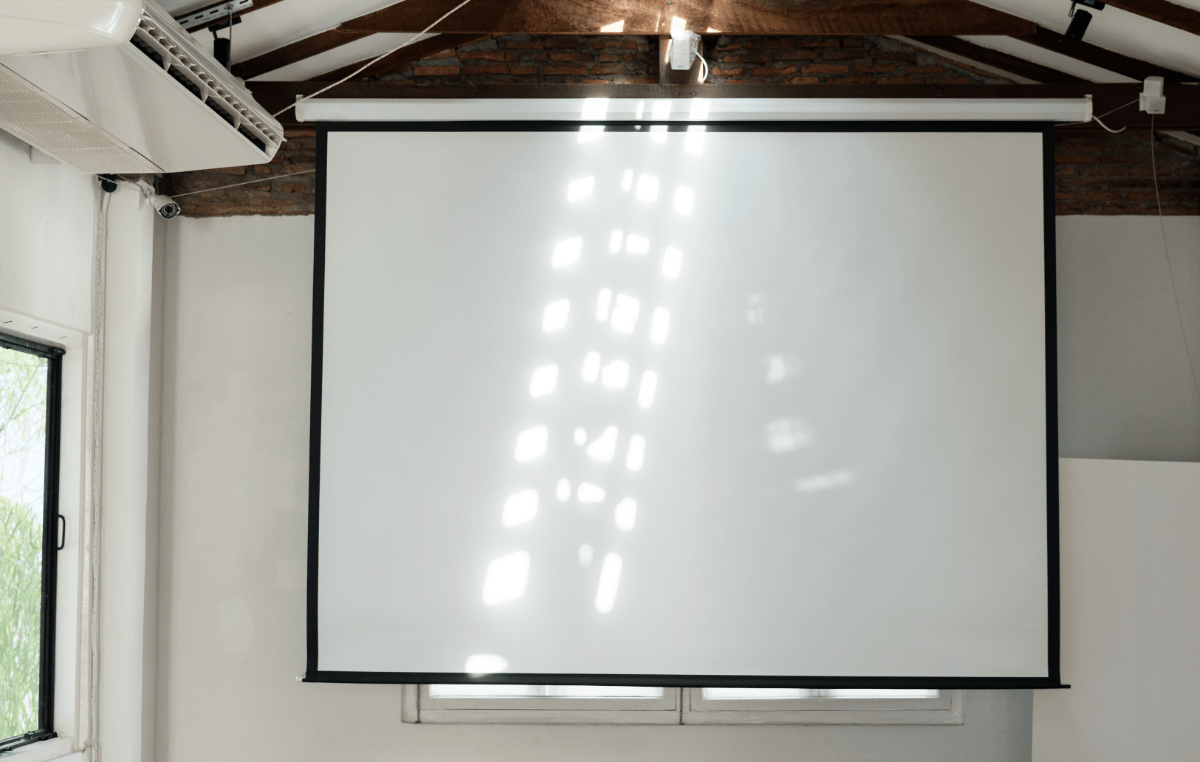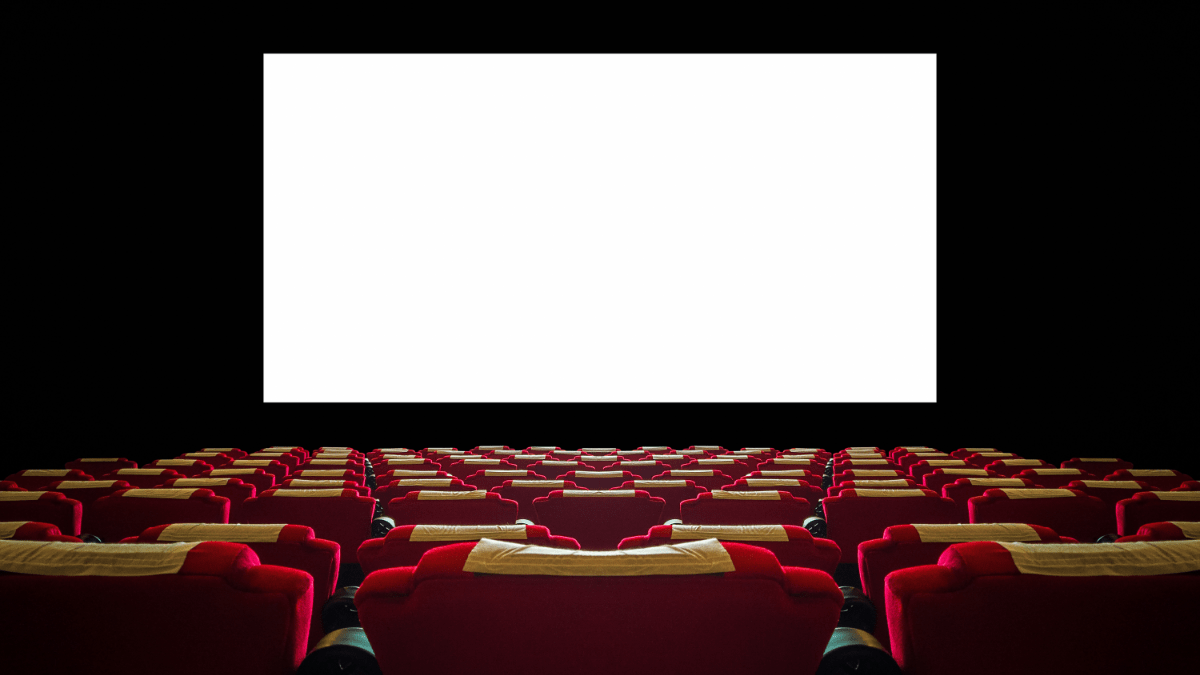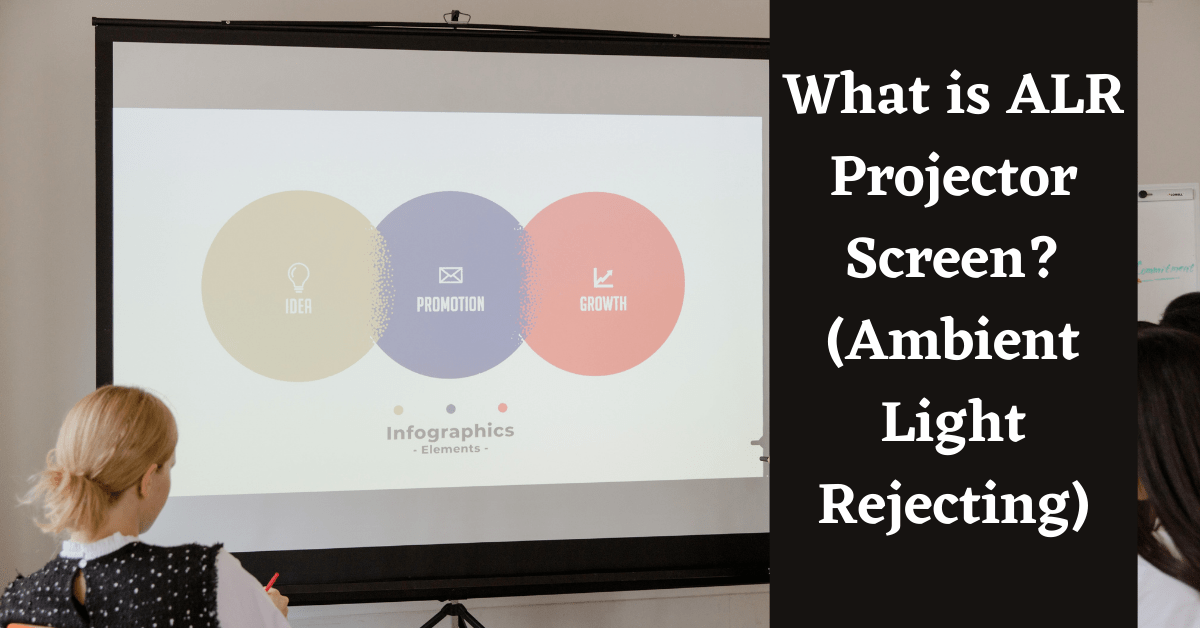Last Updated on August 9, 2024 by Admin
When searching for a projector screen, you might have come across the term ‘ALR Projector screen’. It is often overlooked due to a lack of awareness about its benefits and usefulness. Understanding ‘What is ALR screen’ will help you choose a better projector screen, especially if you plan to use your projector in environments where light control is limited.
In the world of projectors, achieving the best possible picture quality often depends on the type of screen you use. While traditional projector screens perform well in dark rooms, they can struggle in brighter environments where the image is washed out by ambient light. This is where Ambient Light Rejecting (ALR) screens come into play.
Also, check out different Types of Projectors.
Page Contents
What is ALR Projector Screen?
ALR stands for Ambient Light Rejecting. These are special Types of Projector Screens designed to reflect ambient light and provide brighter images.
What is Ambient Light?
You may find different definitions for ambient light. But, in simple terms, Ambient light refers to the natural or artificial light present in your room or environment, such as sunlight, tube lights, and bulbs. This light can affect the visibility and clarity of projected images, especially in rooms where you cannot control the lighting conditions. You will often encounter the term “ambient light” when discussing or studying projectors.

Ambient Light Rejecting Projector Screen Material
ALR (Ambient Light Rejecting) screens are made of specialized materials that reflect ambient light away from the viewer while enhancing the brightness and contrast of the projected image. The ALR Projector screen has a unique coating over the surface that ensures the projected light is directed toward the viewers. This results in a clearer and more vivid picture output even in well-lit environments.
Along with an ALR screen, you can also get a Best Projector for Bright Room, to get the best experience.
How Do ALR Screens Work?
ALR screens are designed to reject ambient light from other directions while reflecting the projector’s light directly toward the audience. Unlike traditional screens that reflect light uniformly, ALR screens ensure that the projected image remains clear and bright. This makes them ideal for a variety of settings, including bright living rooms, conference rooms, and classrooms.
Benefits of Using an ALR Projector Screen
Improved Picture Quality in Bright Environments:
ALR screens maintain image brightness and contrast by rejecting ambient light, ensuring clear and vivid visuals.
Enhanced Contrast and Color Accuracy:
By focusing light toward the viewers, ALR screens enhance contrast and color accuracy, providing a more immersive viewing experience.
Versatility in Different Lighting Conditions:
Suitable for various lighting conditions, from bright living rooms to controlled home theaters.
Ideal for Multiple Settings:
Perfect for home theaters, conference rooms, classrooms, and any other space where controlling ambient light is challenging.
Do You Really Need an ALR Screen?
Not necessarily. If you can control the ambient light in your viewing environment, a normal projector screen may suffice, and it’s often much cheaper than an ALR screen. However, if you cannot block out the light, investing in an ALR screen can significantly enhance your viewing experience.
Examples:
Controlled Environments: In a theater where doors are closed, and lights are turned off to create a pitch-black environment, a regular projector screen will work fine.
Uncontrolled Environments: In offices and classrooms where it’s challenging to create a dark environment, an ALR screen is beneficial.

Deciding Whether you need an ALR Screen for Your Projector
When selecting an ALR screen, consider the following factors:
Room Lighting: If you cannot control the room lighting, an ALR screen is the perfect option. However, if you can control the ambient light in your room, a normal projector screen will suffice.
Projector Type: ALR screens are well-suited for long-throw projectors since the greater distance between the projector and screen results in more ambient light interference.
Check out the difference between Ultra Short Throw Vs Short Throw Vs Long Throw Projector
Screen Size: A larger screen size means more light interference, so an ALR screen is better suited if you wish to have a larger projector screen.
Budget: The only drawback of an ALR projector screen is that it is more expensive than traditional projector screens.
Viewing Angle and Gain: ALR screens typically have higher gain for brighter images in well-lit environments but may offer a narrower viewing angle, so choose one that suits your seating arrangement.

Types of ALR Projector Screens
Fixed Frame ALR Screens:
These screens are mounted on a fixed frame and provide a sturdy, fixed frame, offering a stable viewing surface ideal for dedicated home theaters.
Motorized ALR Screens:
These screens can be rolled up and down with a motorized mechanism, offering flexibility in usage and storage. They are perfect for multipurpose rooms.
Portable ALR Screens:
These are easy to set up and transport, making them ideal for presentations or temporary setups.
ALR Screen Paints:
ALR screen paint is a special type of paint designed to improve the projection quality in rooms with significant ambient light. Unlike traditional projection screens, ALR screen paint is formulated with materials that enhance the brightness and contrast of the projected image by reflecting more light towards the viewer. While it is not as effective as dedicated ALR screens, it can be a cost-effective solution for those looking to improve their viewing experience without investing in a new screen.
ALR Screen Maintenance & Setup:
Installation and Setup Tips
Placement: Place the ALR screen in a location where it can effectively reject ambient light and direct the projector’s light toward the viewers.
Setup: Follow the manufacturer’s instructions for mounting or installing the screen. Ensure it is level and securely fixed.
Maintenance: Clean the screen surface regularly to maintain optimal picture quality. Avoid using harsh chemicals that could damage the screen.
How to Clean ALR Screen?
ALR screens are made of special material with a shiny surface. It is essential to clean them properly to keep the screen surface safe.
Use a Microfiber Cloth: Gently clean the screen with a damp microfiber cloth to avoid scratching the surface.
Damp Cleaning: If there are smudges or stains, dampen the microfiber cloth slightly with water or a mild cleaning solution.
Avoid Direct Application: Do not spray cleaners directly onto the screen, apply any cleaning solution to the cloth instead. Avoid using strong chemicals.
Gentle Wiping: Wipe the screen gently in a circular motion to avoid damaging the surface.
Drying: Allow the screen to dry completely before rolling it up.
Best Projector Screen for Ambient Light
One of the best ALR projector screens on the market is the Elite Screens AR120DHD3. Elite Screens is a well-known brand in the projector screen industry, and this model offers excellent quality and performance. Although it might be more expensive than other ALR screens, it is worth the investment for its superior performance.
ALR Screen for UST Projector
Ultra Short Throw (UST) projectors benefit significantly from ALR screens. These projectors are placed very close to the screen and project the image at a steep angle, making them more susceptible to ambient light interference. An ALR screen can help enhance the image quality by rejecting ambient light from the sides and above.
ALR Projector Screen 120
A 120-inch ALR projector screen is a popular size that offers a large viewing area, making it suitable for home theaters, conference rooms, and classrooms. This size provides an immersive experience, especially when paired with a high-quality projector. The Elite Screens AR120DHD3 is an example of a highly recommended 120-inch ALR screen, known for its excellent performance in bright environments.

Elite Screens 120 inch CLR and ALR Projector Screen 16:9 4K, Standard Throw Projection
150 Inch ALR Screen
A 150-inch ALR screen is ideal for those looking for an expansive viewing experience. This size is perfect for large home theaters, commercial spaces, and auditoriums. The large screen size, combined with ALR technology, ensures that viewers can enjoy bright and clear images even in environments with significant ambient light.

ALR Screen for UST Projector, CLR and ALR Fixed Frame Projector Screen Wall Mount 120 inch 16:9 8K/4K 3D

Frequently Asked Questions (FAQs):
Q: Can an ALR screen improve my viewing experience in a completely dark room?
A: While ALR screens are designed for bright environments, they can still enhance contrast and color accuracy in dark rooms, but the benefits are more noticeable in well-lit conditions.
Q: What is the difference between ALR and regular projection screens?
A: ALR screens reject ambient light and direct projector light toward the audience, while regular screens reflect light uniformly in all directions.
Q: Are ALR screens worth the investment?
A: If you frequently use your projector in a room with ambient light, an ALR screen is definitely worth the investment for improved picture quality and viewing experience. However, if you can control the light completely, you can get a normal screen at a very affordable price.
You can check out Related Articles:
How to Use a Projector Outside During the Day?
Best Outdoor Projector Under $300
Best Projector Screen for Bright Room
Conclusion:
Ambient Light Rejecting (ALR) screens are a revolutionary advancement in the world of projectors, providing an enhanced viewing experience in bright rooms. They offer enhanced picture quality and a more immersive viewing experience. Whether you’re setting up a home theater, conference room, or classroom, an ALR projector screen can significantly improve your projector’s performance. However, they are more expensive than regular screens, so it’s crucial to balance your needs and budget.
If you’ve had experiences with ALR Projector screens or have any questions, please share them in the comments below. Don’t forget to share this article with your friends and family who might benefit from an ALR screen.


